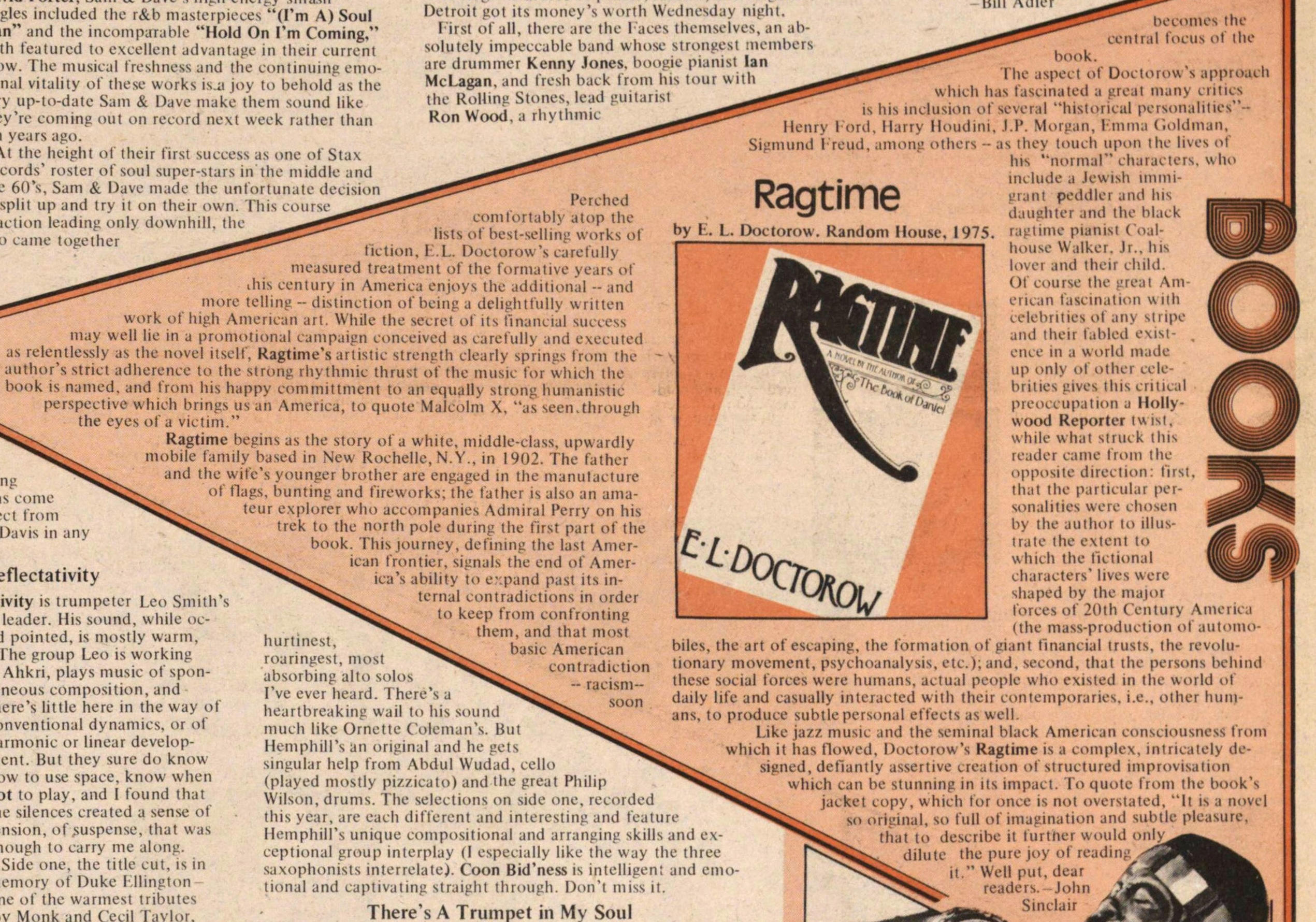Books

Ragtime
by E.L. Doctorow. Random House, 1975
Perched comfortably atop the lists of best-selling works of fiction, E.L. Doctorow's carefully measured treatment of the formative years of this century in America enjoys the additional -- and more telling -- distinction of being a delightfully written work of high American art. While the secret of its financial success may well lie in a promotional campaign conceived as carefully and executed as relentlessly as the novel itself Ragtime's artistic strength clearly springs from the author's strict adherence to the strong rhythmic thrust of the music for which the book is named, and from his happy commitment to an equally strong humanistic perspective which brings us an America, to quote Malcolm X, "as seen through the eyes of a victim."
Ragtime begins as the story of a white, middle-class, upwardly mobile family based in New Rochelle, N.Y., in 1902. The father and the wife's younger brother are engaged in the manufacture of flags, bunting and fireworks; the father is also an amateur explorer who accompanies Admiral Perry on his trek to the north pole during the first part of the book. This journey, defining the last American frontier, signals the end of America's ability to expand past its internal contradictions in order to keep from confronting them, and that most basic American contradiction -- racism -- soon becomes the central focus of the book.
The aspect of Doctorow's approach which has fascinated a great many critics is his inclusion of several "historical personalities" -- Henry Ford, Harry Houdini, J.P. Morgan, Emma Goldman, Sigmund Freud, among others -- as they touch upon the lives of his "normal" characters, who include a Jewish immigrant peddler and his daughter and the black ragtime pianist Coalhouse Walker, Jr., his lover and their child. Of course the great American fascination with celebrities of any stripe and their fabled existence in a world made up only of other celebrities gives this critical preoccupation a Hollywood Reporter twist, while what struck this reader came from the opposite direction: first, that the particular personalities were chosen by the author to illustrate the extent to which the fictional characters' lives were shaped by the major forces of 20th Century America (the mass-production of automobiles, the art of escaping, the formation of giant financial trusts, the revolutionary movement, psychoanalysis, etc.); and, second, that the persons behind these social forces were humans, actual people who existed in the world of daily life and casually interacted with their contemporaries, i.e., other humans, to produce subtle personal effects as well.
Like jazz music and the seminal black American consciousness from which it has flowed, Doctorow's Ragtime is a complex, intricately designed, defiantly assertive creation of structured improvisation which can be stunning in its impact. l quote from the book's jacket copy, which for once is not overstated, "It is a novel so original, so full of imagination and subtle pleasure, that to describe it further would only dilute the pure joy of reading it." Well put dear readers. -- John Sinclair
Article
Subjects
Freeing John Sinclair
Old News
Ann Arbor Sun